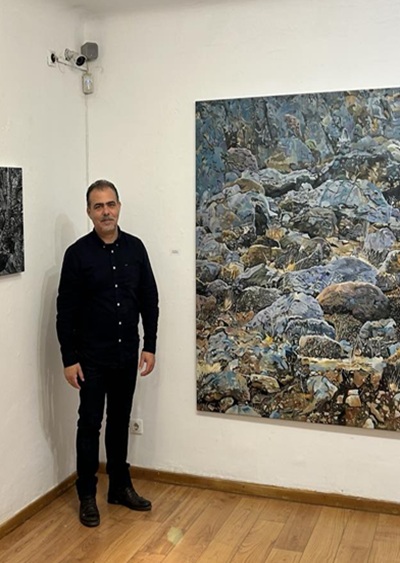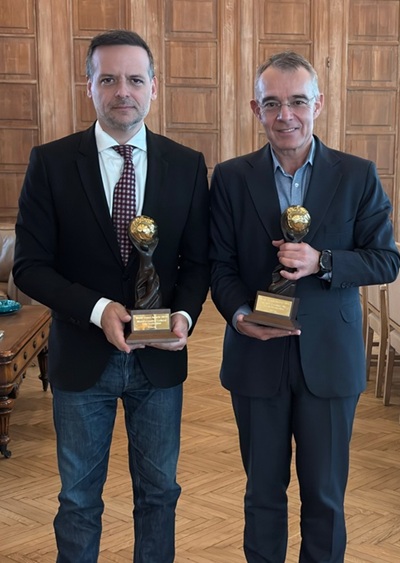
The inscription of the Minoan Palace Centers on the UNESCO World Heritage List, which was announced during the proceedings of the 47th Session of the World Heritage Committee, is a major achievement for our country.
It constitutes international recognition of the outstanding universal value of the six extremely important archaeological sites of Crete—Knossos, Phaistos, Malia, Zakros, Zominthos, and Kydonia—which formed the serial nomination. At the same time, it represents a commitment by Greece to preserve and protect the cultural values of these significant monumental complexes intact. Today’s inscription is the culmination of the systematic, painstaking, long-term effort of the experienced staff and services of the Ministry of Culture and their constructive collaboration with the Region of Crete and other relevant bodies in preparing the nomination file
The World Heritage Committee, relying also on the evaluation of its competent advisory body, ICOMOS, recognized the Outstanding Universal Value of the Minoan Palace Centers, their authenticity and integrity, as well as the existence of a strong protection framework and a structured Management Plan, which are essential components for inscription on the World Heritage List.
The Minister of Culture, Lina Mendoni, present at the announcement of the inscription, made the following statement upon the completion of the inscription process:
“Today is a milestone day for our homeland, for the Greek people, for Crete, and for Culture throughout its long historical course. With the inscription of the Minoan Palace Centers on the World Heritage List, the Minoan civilization, one of the most brilliant civilizations of the prehistoric Aegean, is recognized and established worldwide. The impressive architectural remains of the Minoan palace complexes, preserved throughout Crete, are the authentic representatives of this civilization. The palaces were not only administrative and economic centers. They were centers of culture, art, and technological innovation. Creations of high art and aesthetics, monumental architecture, with a developed system of writing and administration, and strong commercial and cultural contacts with the peoples of the Eastern Mediterranean. The promotion of the Minoan civilization allows us to better understand the origins of European cultural development, establishing Crete as a cradle of culture of global significance. I thank from the bottom of my heart all those who contributed to this success of my country. The institutional representatives of UNESCO and the World Heritage Centre — especially its Director Lazare Eloundou — the Ministry of Foreign Affairs and the Permanent Greek Delegation — led by Giorgos Koumoutsakos — the Region of Crete and personally Stavros Arnaoutakis, and of course, my colleagues at the Ministry of Culture — in the persons of the Director of Prehistoric and Classical Antiquities Elena Kountouri, the department head Dina Benisi, and the Director of Restoration of Ancient Monuments Themis Vlachoulis — and our representatives on the World Heritage Committee — in the person of Evgenia Gerousi. Thanks to their hard work, long experience, knowledge, and dedication, today we all feel extremely proud.”
The Minoan Palace Centers constitute the most emblematic element of the identity of the Minoan civilization, one of the most remarkable prehistoric civilizations of the Eastern Mediterranean, which developed over two millennia (2800–1100 BC). The Minoan heritage, a repository and treasury of values, myths, and social ideas, has influenced artistic and intellectual thought throughout a historical trajectory spanning many millennia. The legend of the complex and labyrinthine Labyrinth designed for King Minos, a marvel of engineering symbolizing creativity and complexity and reflecting the architectural complexity and monumentality of the palaces, remains to this day a symbol of intricate organization with worldwide recognition in terms of terminology and form. At the same time, Minoan art, with its naturalistic characteristics, influences artistic creative composition across the world in various fields such as philosophy, painting, literature, music, poetry, theater, and cinema.
The Minoan Palace Centers represent the most authentic and representative expression of the flourishing Minoan society, providing evidence of early urban development and revealing complex sociopolitical structures functionally organized around a hierarchical administrative system. They were administrative, economic, and religious centers, whose complex architectural forms, influenced by Egypt and the Near East, were designed to serve the diverse needs and functions of a hierarchical society. These monuments constitute a timeless point of reference in the history of humanity, as they provide material testimony to the development of early economic systems such as agriculture, animal husbandry, and maritime trade. They also represent a valuable source of documentation for the two oldest writing systems in Europe—Cretan Hieroglyphs and Linear A—which were invented in Crete as early as the beginning of the 2nd millennium BC.
The responsibility for preparing the nomination dossier was undertaken by the Directorate of Prehistoric and Classical Antiquities, in collaboration with the Archaeological Services of Crete and with the dynamic support of the Region of Crete. For the archaeological documentation of the dossier, the contribution of the Foreign Archaeological Schools and the directors of the systematic excavation research active in Crete was invaluable. The National and Kapodistrian University of Athens, through the Department of Environmental Physics and Meteorology, made a significant contribution to documenting the risks related to climate change, while the academic community contributed extensively to the documentation of specialized topics in Minoan archaeology. The dossier was enriched with numerous data willingly provided by local government authorities, external collaborators, and experts, while the contribution of the Ministry of Climate Crisis and Civil Protection was particularly important in drafting risk management plans, which were incorporated into the Management Plan. Additionally, in excellent cooperation with the Region of Crete, a strategy for an “Integrated Spatial Investment (ISI) ‘Cultural Routes of the Minoan Palace Centers’” was developed, with the main objective of enhancing the visitor experience at the Minoan palace centers.







Leave A Comment